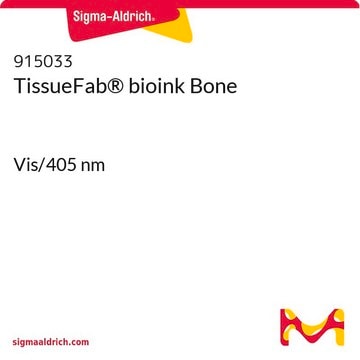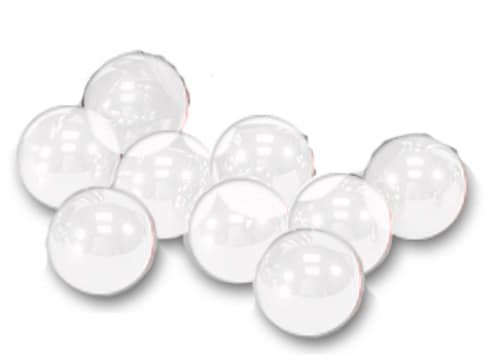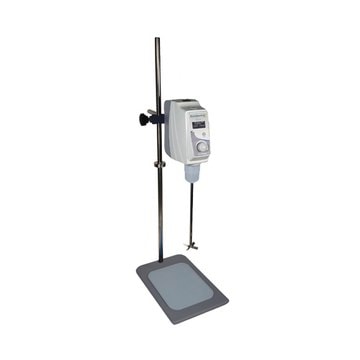920975
TissueFab® bioink
(GelAlgHA)ma -UV/365 nm
Synonym(s):
AlgMA, Alginate, Bioink, GelMA, Gelatin, HAMA, Hyaluronic acid
About This Item
Recommended Products
Quality Level
description
suitable for 3D bioprinting applications
sterility
sterile-filtered
form
viscous liquid (or gel)
impurities
<5 CFU/g Bioburden (Fungal)
<5 CFU/g Bioburden (Total Aerobic)
color
colorless to pale yellow
particle size
0.2 μm
pH
(6.5-7.5)
application(s)
3D bioprinting
storage temp.
2-8°C
Looking for similar products? Visit Product Comparison Guide
Related Categories
Application
This bioink is derived from natural polymers − hyaluronic acid, alginate and gelatin. Hyaluronic acid is also known as sodium hyaluronate or hyaluronan, is an anionic, nonsulfated glycosaminoglycan (GAG). Alginate also known as sodium alginate or alginic acid, is a natural biopolymer obtained from brown algae. Alginate is a natural polysaccharide widely used in tissue engineering. Gelatin contains bioactive peptide sequences similar to native extracellular matrix which promotes integrin mediated cell adhesion and MMP sensitive enzymatic degradation which are essential for cellular functions such as migration, proliferation and differentiation.
Features and Benefits
- Ready-to-use formulation optimized for high printing fidelity and cell viability, eliminating the lengthy bioink formulation development process
- Step-by-step protocols developed and tested by MilliporeSigma 3D Bioprinting Scientists, no prior 3D bioprinting experience needed
- Suitable for different extrusion-based 3D bioprinter model
Packaging
Legal Information
Storage Class Code
10 - Combustible liquids
WGK
WGK 3
Certificates of Analysis (COA)
Search for Certificates of Analysis (COA) by entering the products Lot/Batch Number. Lot and Batch Numbers can be found on a product’s label following the words ‘Lot’ or ‘Batch’.
Already Own This Product?
Find documentation for the products that you have recently purchased in the Document Library.
Articles
Bioinks enable 3D bioprinting of tissue constructs for drug screening and transplantation; select suitable bioinks for specific tissue engineering.
Learn how 3D bioprinting is revolutionizing drug discovery with highly-controllable cell co-culture, printable biomaterials, and its potential to simulate tissues and organs. This review paper also compares 3D bioprinting to other advanced biomimetic techniques such as organoids and organ chips.
Our team of scientists has experience in all areas of research including Life Science, Material Science, Chemical Synthesis, Chromatography, Analytical and many others.
Contact Technical Service








